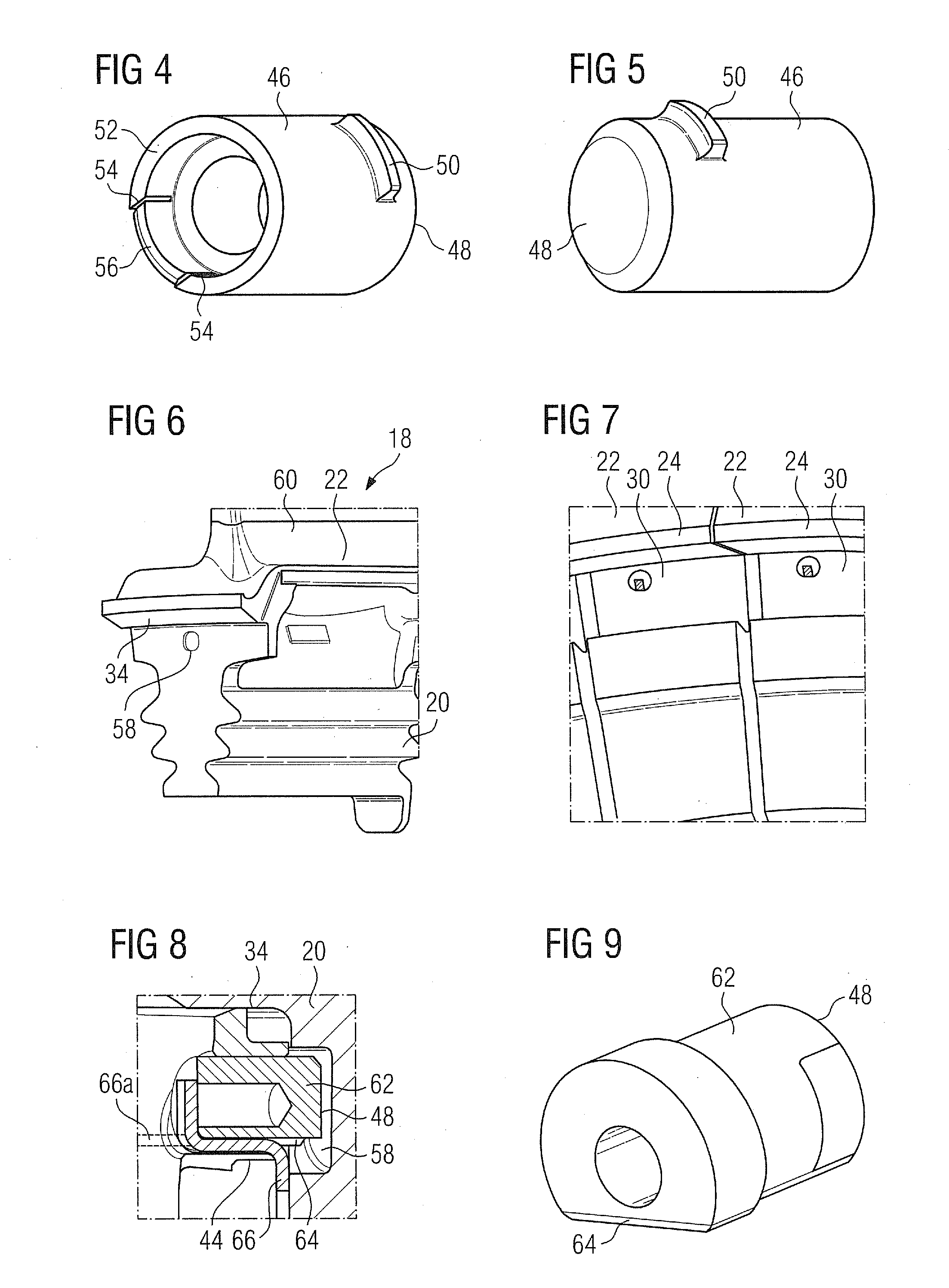Rotor section for a rotor of a turbomachine, and rotor blade for a turbomachine
a technology of rotor blade and turbomachine, which is applied in the direction of climate sustainability, sustainable transportation, and fastening means, can solve the problems of corrosion and strength in the screw fastening, and the side surfaces of the rotor disk and the sealing strip with projections and recesses are difficult to construct, and achieves comparatively inexpensive arrangement and high robustness.
- Summary
- Abstract
- Description
- Claims
- Application Information
AI Technical Summary
Benefits of technology
Problems solved by technology
Method used
Image
Examples
Embodiment Construction
[0037]FIG. 1 shows in partially perspective, partially sectioned view a rotor section 10 for the rotor of a turbomachine, which is not additionally shown, which can be designed as a gas turbine. The rotor section essentially comprises on the one hand a first rotor disk 12 and a further rotor disk 14 which is adjacent thereto. The rotor disks 12, 14 are interconnected in a form-fitting manner by means of a Hirth toothing, which is not shown, for the transmission of torque, and are clamped to each other via a tension bolt, which is not additionally shown. The rotor section 10, alternatively to the depicted representation, could also be formed from a single piece in the form of a monoblock or from a singe rotor disk. On the outer periphery of the rotor section 10, provision is made for a plurality of rotor blade retaining grooves 16 which in each case extend at least partially in the axial direction of the rotor and of which only one is shown in section. The rotor blade retaining groov...
PUM
 Login to View More
Login to View More Abstract
Description
Claims
Application Information
 Login to View More
Login to View More - R&D
- Intellectual Property
- Life Sciences
- Materials
- Tech Scout
- Unparalleled Data Quality
- Higher Quality Content
- 60% Fewer Hallucinations
Browse by: Latest US Patents, China's latest patents, Technical Efficacy Thesaurus, Application Domain, Technology Topic, Popular Technical Reports.
© 2025 PatSnap. All rights reserved.Legal|Privacy policy|Modern Slavery Act Transparency Statement|Sitemap|About US| Contact US: help@patsnap.com



